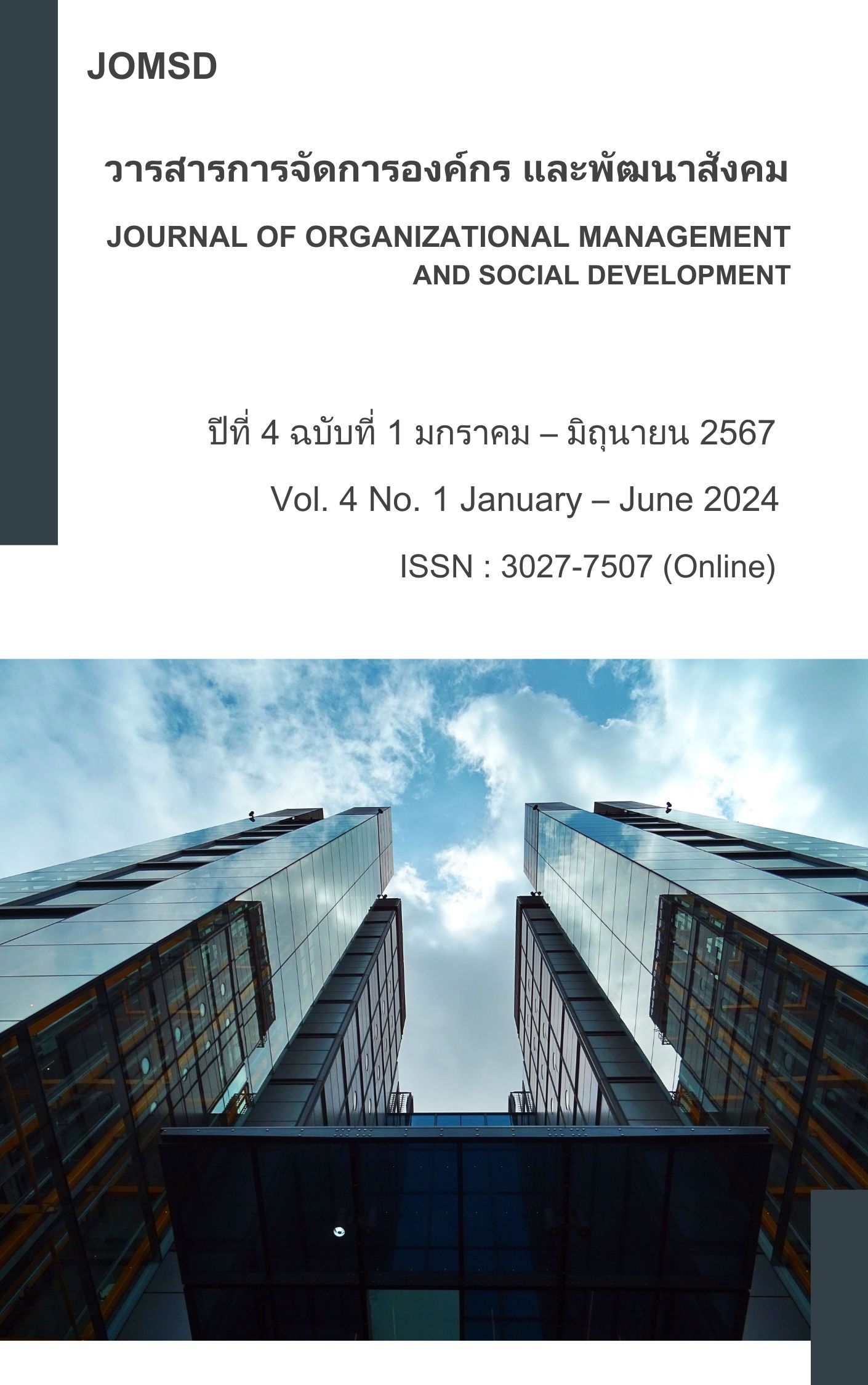Guidelines for Developing Organic Rice Farmers in Udon Thani Province
Main Article Content
Abstract
The objectives of this research are 1) to study the development of organic rice farmers, 2) to study factors affecting the development of organic rice farmers, and 3) to study guidelines for the development of organic rice farmers in Udon Thani Province. It is quantitative research and qualitative research. Sample groups include: Voters in Udon Thani Province, 400 people, group of 10 people providing information Research tools include questionnaires and interviews. Statistics used in data analysis include frequency, percentage, and multiple regression analysis and descriptive analysis Accompanying the discussion of results the results of the research found that: 1) Development of organic rice farmers. Overall, it is at a moderate level. They can be arranged in descending order as follows: Social and community aspects Environmental and technological aspects, respectively. 2) Factors affecting the development of organic rice farmers, found that government support (X3) and local role (X4) had coefficients of the predictors in the raw scores (b) equals .110 and .068, respectively and 3) the environment should be studied. Conditions of land, equipment and various tools related to farmer development according to the project plan. The results are monitored and evaluated in accordance with the environment and geography. The Department of Agriculture or related agencies bring technology to develop and the application of new public relations communications technologies and the appointment of working groups or operating committees set the terms and conditions Organize community meetings/forums to discuss solutions and solutions. Coordinate and request cooperation from relevant agencies to manage or solve farmer development problems and establish a fund to promote organic rice farmers.
Article Details
References
กัลยา วานิชย์บัญชา. (2560). การวิเคราะห์สถิติขั้นสูงด้วย SPSS FOR WINDOW. (พิมพ์ครั้งที่ 12). กรุงเทพฯ: สามลดา.
จริยา โนนแดง และสมพันธ์ เตชะอธิก. (2562). การดำเนินงานและปัญหาการดำเนินงานของกลุ่มข้าวกล้องอินทรีย์ตำบลหนองแซง อำเภอบ้านแฮด จังหวัดขอนแก่น. (ศิลปศาสตรมหาบัณฑิต, มหาวิทยาลัยขอนแก่น).
นภาพร เวชกามา และธีระรัตน์ ชิณแสณ. (2561). การพัฒนาการทำนาข้าวอินทรีย์ของกลุ่มเกษตรผสมผสาน 4 หมู่บ้านห้วยหลาว อำเภอนาเชือก จังหวัดมหาสารคาม (รายงานการวิจัย). มหาสารคาม: สาขาวิชาเกษตรศาสตร์ คณะเทคโนโลยีการเกษตร มหาวิทยาลัยราชภัฏมหาสารคาม.
พิมพิดา โยธาสมุทร. (2552). บทวิเคราะห์: โอกาสการส่งออกข้าวไทยในวิกฤตอาหารโลก. กรุงเทพฯ: สำนักข่าวกรมประชาสัมพันธ์.
แพรวรินทร์ มหาวรรณ์. (2551). กลยุทธ์การตลาดผลิตภัณฑ์ผักปลอดภัยจากสารพิษของโครงการหลวงในเขตอำเภอเมือง จังหวัดเชียงใหม่. (บริหารธุรกิจมหาบัณฑิต, มหาวิทยาลัยแม่โจ้).
ยุธยา อยู่เย็น, ปิยาภรณ์ วรานุสันติกูล, สุนทร เทียนงาม, ชาญชัย ตรีเพชร และตระกูล รัมฉัตร. (2556). การพัฒนาการทำนาข้าวอินทรีย์ ชุมชนตำบลโคกโคเฒ่า อำเภอเมือง จังหวัดสุพรรณบุรี. Journal of Food Health and Bioenvironmental Science, 6(2), 185–192.
สมนึก ปัญญาสิงห์ และเศกสรรค์ ยงวณิชย์. (2565). การจัดการของกลุ่มเกษตรกรผลิตข้าวอินทรีย์ กรณีศึกษา วิสาหกิจชุมชนกลุ่มข้าวคุณค่าชาวนาคุณธรรมบ้านโนนทรายงาม. วารสารรัฐศาสตร์และรัฐประศาสนศาสตร์ มหาวิทยาลัยขอนแก่น, 7(1), 1-19.
สวรรค์ มณีโชติ และดุสิต อธินุวัฒน์. (2562). ปัจจัยที่ส่งผลต่อความความสำเร็จของเกษตรอินทรีย์ในชุมชนเกษตรกรรายย่อย จังหวัดนครสวรรค์. Thai Journal of Science and Technology, 8(6), 1-16.
สำนักงานปลัดกระทรวงเกษตรและสหกรณ์. (2566). ข้อมูลพื้นฐานของจังหวัดอุดรธานี. สืบค้นจาก https://www.opsmoac.go.th/udonthani-dwl-files-432891791823.
Cronbach, L. J. (1990). Essentials of psychological testing. (5th ed.). New York: Harper Collins Publishers.
Yamane, T. (1973). Statistics: an introductory analysis. New York: Harper. & Row.

